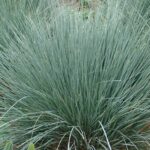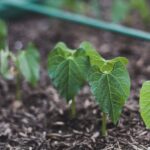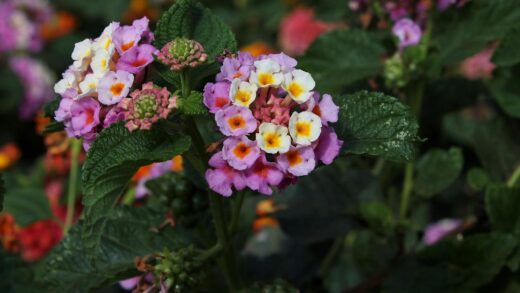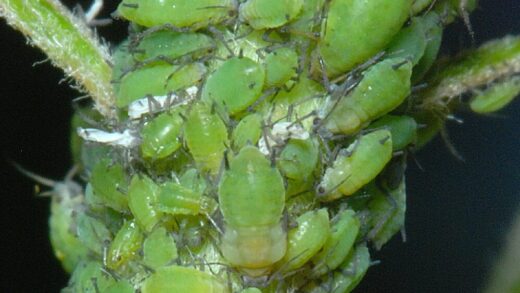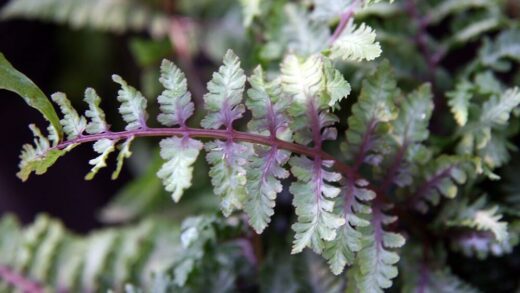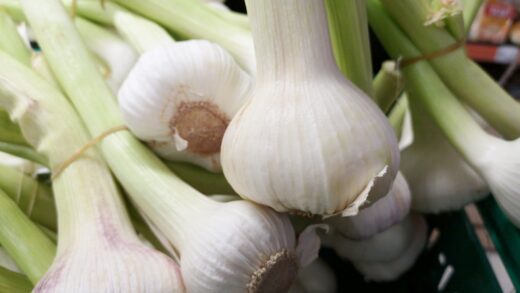Bacopa is a tender perennial, a classification that can cause confusion for many gardeners. In its native, frost-free climate of southern Africa, it can live for several years. However, in temperate regions with cold winters, it is unable to survive freezing temperatures and is therefore most often treated as an annual plant, discarded at the end of the growing season. For those with a desire to preserve a particularly beautiful specimen or simply enjoy the challenge, it is entirely possible to overwinter bacopa indoors. This process involves bringing the plant inside before the first frost and providing it with the right conditions to survive the winter months until it can be returned outdoors in the spring.
The primary motivation for overwintering bacopa is to save the plant from the lethal effects of a hard freeze. This not only preserves the specific genetic traits of a favourite plant but also gives the gardener a significant head start the following spring. An overwintered plant is already mature and will typically begin to grow and flower much earlier than a newly purchased young plant. However, the process is not without its challenges. The indoor environment of a typical home—with its lower light levels, dry air, and stable temperatures—is very different from the outdoor conditions in which the plant thrives.
Successfully overwintering bacopa requires a deliberate and careful approach. It is not simply a matter of bringing a pot inside and placing it on a windowsill. The transition from outdoors to indoors must be managed carefully to avoid shocking the plant. This includes a thorough pest inspection, strategic pruning, and selecting an appropriate indoor location. Once inside, the plant’s care routine, particularly watering and feeding, must be adjusted to match its semi-dormant winter state.
This article will provide a detailed, step-by-step guide to the process of successfully overwintering bacopa. We will cover the essential preparations needed before bringing the plant indoors, how to create a suitable indoor environment, the specific care requirements during the winter months, and how to re-acclimate the plant to outdoor conditions in the spring. By following these guidelines, you can extend the life of your favourite bacopa and enjoy its beauty for another season.
Preparing the plant for indoors
The preparation for overwintering should begin well before the first frost is forecasted for your area. A sudden drop in temperature can damage the plant, so it is best to be proactive. The first and most critical step is to conduct a meticulous inspection of the entire plant for any signs of pests. Insects like aphids, whiteflies, and spider mites, which may have been kept in check outdoors by natural predators, can multiply rapidly in the warm, protected indoor environment. Carefully check the undersides of leaves, the leaf axils, and the stems. If any pests are found, they must be treated before the plant is brought inside. A thorough spray with insecticidal soap or neem oil is a good preventative measure even if no pests are visible.
More articles on this topic
Once the plant is confirmed to be pest-free, it is time for a significant pruning. Bacopa can become quite long and trailing by the end of the season, and bringing the entire plant indoors can be cumbersome. More importantly, the plant will not be able to support all of its extensive foliage with the lower light levels available indoors. Using clean, sharp pruning shears, cut the plant back by at least one-half to two-thirds. This may seem drastic, but it reduces the stress on the plant, makes it more manageable, and encourages a flush of new, more compact growth once it adjusts to its indoor location.
This is also a good opportunity to refresh the soil. Scrape off the top few centimetres of the existing soil and replace it with fresh potting mix. This removes any weed seeds, insect eggs, or fungal spores that may be lurking on the soil surface. Check the drainage holes of the pot to ensure they are not clogged. Do not repot the entire plant into a larger container at this stage; keeping it slightly root-bound can help to control its growth over the winter. A full repotting can wait until the spring.
The final step in preparation is a gradual transition. Instead of moving the plant directly from its sunny outdoor spot to its final indoor location, acclimate it over the course of a week. Start by placing it in a shady, protected outdoor location, like a porch or under an overhang, for a few days. Then, bring it indoors for a few hours each day, gradually increasing the amount of time it spends inside. This slow acclimatization process helps the plant adjust to the significant changes in light, temperature, and humidity, reducing the risk of shock, which can cause sudden leaf drop.
Creating the right indoor environment
The key to successfully keeping bacopa alive through the winter is to provide it with as much light as possible. The low light conditions of a typical home in winter are the biggest challenge for this sun-loving plant. The absolute best location is an unobstructed south-facing window where the plant can receive the maximum amount of direct sunlight available. If a south-facing window is not an option, an east- or west-facing window is the next best choice. A north-facing window will not provide nearly enough light for the plant to survive.
More articles on this topic
Even with the brightest window available, the intensity and duration of natural winter light are often insufficient. To supplement this, the use of artificial grow lights is highly recommended. A simple fluorescent shop light or a dedicated LED grow light placed 15-30 centimetres above the plant can make a significant difference. The lights should be run on a timer for approximately 14-16 hours per day to mimic the long days of summer. This will help to prevent the plant from becoming weak, pale, and leggy.
Bacopa prefers cool temperatures during its winter rest period. An ideal temperature range is between 10°C and 15°C. A cool, bright room, a minimally heated sunroom, or a cool basement with grow lights can provide these conditions. Avoid placing the plant near heat sources such as radiators, heating vents, or fireplaces, as the hot, dry air can be very damaging. Also, keep it away from drafty windows or doors where it could be exposed to sudden cold drafts.
Humidity is another important factor to consider. Most homes are very dry in the winter due to central heating. Bacopa appreciates a more humid environment. To increase the humidity around the plant, you can place the pot on a tray filled with pebbles and water, ensuring the bottom of the pot is sitting on the pebbles and not in the water itself. As the water evaporates, it will create a small microclimate of higher humidity. Alternatively, running a small humidifier in the room or grouping it with other houseplants can also help to raise the ambient humidity.
Winter care: watering and feeding
The care routine for an overwintered bacopa must be significantly different from its summer regimen. During the winter, the plant’s growth will slow down dramatically as it enters a state of semi-dormancy. Consequently, its need for water will be greatly reduced. The most common mistake made when overwintering plants is overwatering, which will quickly lead to root rot in the cool, low-light conditions. It is essential to allow the soil to dry out much more than you would in the summer.
Before watering, check the soil moisture by inserting your finger at least 2-5 centimetres deep. Only water when the soil feels dry to this depth. When you do water, provide enough so that it runs through the drainage holes, but then allow the plant to dry out again before the next watering. It is possible that the plant may only need to be watered every two to three weeks, depending on the specific conditions in your home. It is always better to err on the side of being too dry rather than too wet during the winter.
Fertilization should be stopped completely during the overwintering period. The plant is not actively growing, so it is not using nutrients at a significant rate. Adding fertilizer to a dormant or semi-dormant plant can lead to a build-up of fertilizer salts in the soil, which can burn the roots and damage the plant. You should not resume feeding the plant until you see clear signs of new, active growth in the late winter or early spring, typically in late February or March.
Throughout the winter, continue to monitor the plant for any signs of pests that may have slipped through the initial inspection. Check the leaves and stems periodically. It is also normal for the plant to drop some of its older leaves as it adjusts to the indoor environment. You may need to perform a light trim occasionally to remove any yellowing leaves or weak, spindly stems that develop. This light grooming will help to keep the plant tidy and direct its limited energy towards healthier growth.
Transitioning back outdoors in spring
The process of moving the overwintered bacopa back outdoors in the spring is just as important as bringing it in and must be done with care. This re-acclimatization process, known as “hardening off,” should begin only after all danger of frost has passed and nighttime temperatures are consistently staying above 10°C. A sudden move from the protected indoor environment to the harsh outdoor elements of direct sun, wind, and fluctuating temperatures can severely shock or even kill the plant.
As the days get longer and stronger in early spring, you will likely notice the plant beginning to put on new growth. This is a good time to give the plant another pruning to shape it up and encourage bushiness. You can also resume fertilization at this point, starting with a half-strength dose of a balanced liquid fertilizer to provide the nutrients needed for this new flush of growth. If the plant has become significantly root-bound over the winter, this is also the ideal time to repot it into a slightly larger container with fresh potting mix.
The hardening-off process should take place over a period of one to two weeks. Start by placing the plant outdoors in a heavily shaded, protected location for just an hour or two on the first day. The next day, leave it out for a bit longer, gradually increasing its time outdoors each day. Over the course of the week, slowly begin to introduce it to periods of direct sunlight, starting with the gentle morning sun and avoiding the intense afternoon sun at first.
After about a week or two of this gradual exposure, the plant should be fully acclimated to the outdoor conditions. It can now be moved to its final growing location for the summer season. Once it is back in its summer spot, you can resume your normal summer care routine of regular watering and fertilization. Your overwintered bacopa, now with a mature root system, will quickly burst into vigorous growth and reward you with a beautiful display of flowers much earlier than any new plants you might purchase.
📷: Deavmi, CC BY-SA 3.0, via Wikimedia Commons







